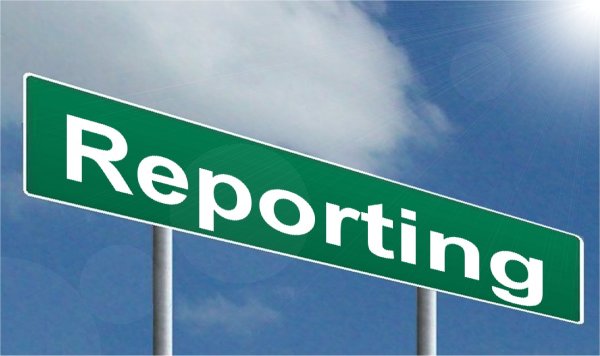January 8, 2014–Integrated Reporting—the combination of financial and non-financial performance in a single report—is based on the principle that any organization can maximize value by serving the interest of all stakeholders and should not be limited to financial return only. Recent studies show that 80 percent of an organizations value is ‘hidden’ in non-financial assets not showing up in traditional financial reports.
[Source: Bob Willard – the Sustainability Advantage]
Integrated Reporting requires an integrated business strategy that creates value by balancing short-term gains with long-term strategy and investment.
On December 10th, 2013, the International Integrated Reporting Council (IIRC) released its framework. Years of work by leading organizations and companies contributed to this release, including the feedback from 359 submissions to the IIRC’s earlier draft proposal. The IIRC’s mission is to create a globally accepted Integrated Reporting framework ‘…that elicits from businesses information about their strategy, governance, performance, and prospects in a clear, concise, and comparable format. The framework will underpin and accelerate the evolution of corporate reporting, reflecting developments in financial, governance, social, and sustainability reporting’.
SAP is an early IIRC pilot and published its first ever Integrated Report in spring 2013. We see ourselves among thought leaders in our role as practitioners, and also by providing solutions to our customers to enable Integrated Reporting. When I read the newly released IIRC framework, a couple of points stood out and demonstrated to me that the IIRC organization is listening to the feedback it has received:
– Investors aren’t the only stakeholders: As the IIRC’s primary audience is ‘providers of financial capital’, such as investors and debt holders, some were concerned that they would take too much of an investor-centric approach and exclude the concerns of others. The framework now states that ‘Investors are still at the forefront to demonstrate value creation, but an integrated report benefits all stakeholders interested in an organization’s ability to create value over time, including employees, customers, suppliers, business partners, local communities, legislators, regulators, and policy-makers’. This response demonstrates that the IIRC understands the need for inclusivity.
– Many reports: It shouldn’t be a requirement to create a single, integrated report. Although in our experience at SAP, it has advantages and accelerates our ultimate goal to enable integrated thinking as a ‘…catalyst to inspire more innovation and creative thinking within a company’. But it might be different for others. IIRC responded by stating ‘…an integrated report is intended to be more than a summary of information in other communications (e.g., financial statements, a sustainability report, analyst calls, or on a website)’. My own interpretation is that additional narratives in form of financial and/or sustainability reports for compliance reasons or to address other stakeholders is ok. And for some it might be the right approach to increase adoption. At SAP we made a clear commitment towards one report.
– Materiality: Some organizations expressed concern over misalignment between the IIRC’s use of the term “material” or “materiality” and how it is used in other common reporting contexts (e.g., financial reporting and sustainability reporting). IIRC concluded ‘…on balance, the term material/materiality should continue to be used as it is well understood in the reporting community and its particular application in the case of an integrated report is adequately explained in the Framework’. IIRC intends to further collect best practices on the materiality determination process and implementation guidance to explore the relationship between materiality and reporting boundaries.
These responses certainly help to overcome some of the expressed concerns brought forward by the community. For me a big open point is still ‘Comparability’. How can we answer questions such as, ”Are we heading in the right direction?” “Are we minimizing our impacts?” “What are the thresholds and goal posts to measure against?” I agree with the IIRC that comparability will increase through further adoption of Integrated Reporting, but it will be interesting to see how it develops over time.
The released IIRC framework is a ‘principle-based’ framework, and two things become evident:
– Application: Examples, evidence, and best practices need to follow in 2014 to adopt the framework and fill it with life. And it needs to happen fast and at scale. Thought leaders and practitioners (and I count my organization among these) need to continue to lead and allow others to learn and adopt. Through constant iteration, fine-tuning, and simplification, best practices will evolve, and the IIRC needs to play a critical role to support and promote these best practices by closely collaborating with the thought leaders and increase investor demand.
– Information and Communication Technology (ICT): ICT has to play a critical role. Robust technical guidance and technology enablement is needed in form of applications and analytics supporting Integrated Reporting narratives. The biggest challenge will be data collection, data consistency, and data integrity. The CFO of one of the biggest consumer goods companies recently said to us in a workshop:
‘I do not have [the same] rigour in SAP for sustainability KPIs that I have for Financials. Big 4 consultants are now engaged at huge costs taking roughly 6 months to redefine KPIS. I don’t need more information but better information. I need insight to identify and manage long-term levers for the business. This is a top priority!’
In our view, patchwork systems will not be sufficient. The data need to come out of the existing enterprise systems in place, and we need to use the same algorithms and methods we are using in financial accounting. We are actively engaging with our customers on this.
2014 is a call to action. It’s still uncharted territory for most and organizations will have to grapple with unforeseen challenges. But the concept is the right one, namely to combine financial, risk, sustainability, and corporate aspects into one single reporting structure. It provides a clear and concise representation of how an organization demonstrates stewardship and how it creates and sustains value. Only through this can a corporate strategy be made sustainable.



